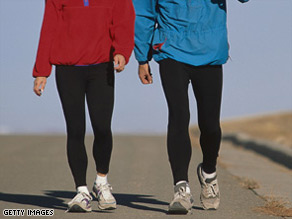Today was workout number 3 of 8 for my four week strength challenge. Overall, good workout. I did 5 lifts today for 5 sets. This extra work pushed me over my 30 minute time limit, overall it was 33 minutes. If you would like to call the experiment a failure now go ahead.
Exercises, Reps, Weights:
Front squat, 8, 155
Standing overhead press 8, 95x3 85x2
Supported split squat 8, 50,55,55,60,60
Pullup (slow reps) 10,10,9,8,7
Dips (slow reps) 10,10,8,8,6
There you have it. Making some good progress. We will see how I feel here in a few weeks!
Now I would like to add a bit of scrutiny towards a common health fad. From time to time, it is nice to put things into perspective with fitness and nutrition fads. Remember jazzercise? how about the atkins diet, juice cleanse anyone?
Today I am calling out the "paleo" diet. That's right, this is nothing more than another one of the trendy fitness fads encircling the web, gyms, and whatever you call those places that look like garages that people "cross fit" in.
First let me lay down the premise of this diet. Humans, once roamed the savanna long ago, we didn't have agriculture, we didn't have twinkies, we didn't have teeth for very long. This lifestyle is what us modern homo-sapiens evolved into. Therefore, we should eat only what we have evolved to eat. They say that the evolutionary process takes hundreds of thousands of years. That long ago, there were no fields of golden wheat, no sources of grain, fruits, or genetically bred vegetables year around. We ate whatever we could scavenge This is what the paleo diet is based on, eating the same components which our distant ancestors evolved on.
This means no grain, no legumes, no sugar, no milk, no flour, nothing in a package. Vegetables meat, some nuts and seeds, and a little fruit here and there.
Sounds like a killer diet right? People have raved about this diet and particularity those closely encircled in the cross fit cult.
Let me start off by saying that this diet is instantly effective over the standard american solely on the fact that you are bringing awareness to what you put into your mouth. Imagine how much kale you would have to eat to account for the calories in peanut butter and jelly sandwiches you are giving up. Cutting sugar and refined carbs is always a good call that is not my argument here.
Another hole in the paleo doctrine is that they say before agriculture humans didn't eat grains. This is absolutely false. According to discovery magazine fossils of human teeth during the paleolithic period have been identified with residue of grains similar to barley and farrow It may be the case that we hadn't yet learned to grow it ourselves but it is likely we learned to eat the grain when we found it.

The next issue I have with Paleo is looking at what set us apart from the rest our species. Soon after we learned to cultivate our own food, our evolution took a turn. Because we didn't have to digest all the meat and foliage, which takes a great deal of effort on our system, our brains were able to thrive. This is because less energy was being put into our digestive system to survive. Also, look at monkey's they all have big mandible jawbones and protruded eyebrows. This is because they need it to bite through hard foods. The big muscles attach to the protuberances on their head. Because humans learned how to cook and cultivate food we evolved jaws capable of communication, our brains also had more room to flourish.
Last, did it occur to anyone that our ancestors evolved to crave salt, sugar, and fat? The three biggest vices in anyone's diet? We were destined to fail. This is because we know that these foods have the most energy, which used to be priority number one on the savanna Walking all day scavenging burns a lot of energy, and when you don't have an abundance of junk food it would be hard to keep up. The average lifespan of our neanderthal brethren was significantly less. Who is to say this diet will provide lifelong nourishment?
Now I hope I have sparked an insight. Always be weary of the next biggest thing. I ask you all to be keen to the pseudo science, think deeply, and form your own opinion rather than just listening to any schmuck behind a keyboard......wait a second
All in good health,
Andrew




























